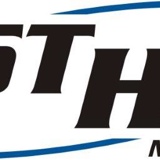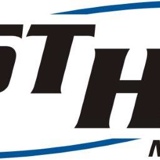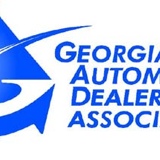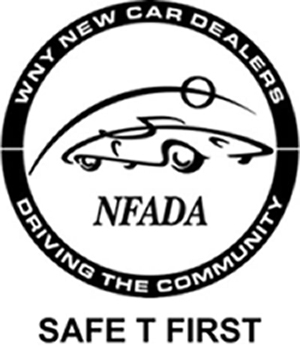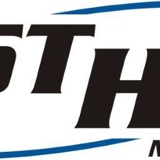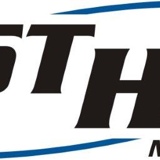Information
-
INSTRUCTIONS
Dealer Name- This box will show on the front page of your audit.
Audit Title- This box will be for the cloud for searching for your audit.
for Program Audit use PA followed by Dealer name
for Safety Inspection use SI followed by Dealer name
Document Number- this is an ID for locating the document.
Location- if you have WIFI or in range of one, this will locate your current location and address
Conducted on- will default to todays date, you can tap on the date to change also
Dealer contact- name and email
Additional copies- name and email
Auditor- select one or more -
Dealer name
-
Audit title (Audit identifier followed by Dealer name)
-
Document No.
-
Location
-
Conducted on
-
Dealer Contact/email
-
Additional Copies (name (s)/email (s))
-
Auditor
- Tom Herrmann tom@nfada.com
- Dale Pyne dpyne@nfada.com
- Paula Battistella paula@nfada.com
- Trey Barrett trey@nfada.com
- Tony Buttino abuttino@lawleyinsurance.com
- Mark Zeisz mzeisz@westherr.com
- Dan Glinski dan@nfada.com
Showroom
-
Check the box if you have a Showroom
EXIT ROUTES
-
Clearly marked with approved signs? (6"x3/4" letters) (29 CFR 1910.37)
-
What type of exit sign?
-
Are bulbs working (exit sign and emergency light)<br>(29CFR 1910.36)<br>
-
Are there emergency lights in the department?
-
Are the lights working properly?
-
Are the directions to exits, when not immediately apparent, marked with visible signs?
-
Are doors which could be confused with emergency exits marked "not an exit" or otherwise identified? <br>(29 CFR 1910.37)
-
Free of locks and easily opened (e.g. Crash Bars) to allow emergency egress from the building? (29 CFR 1910.36 (d) (1) and or (d) (2)
-
Free from obstruction?
-
Is the distance between exit doors and the ground no more than 10 inches in height, or are steps installed? (29 CFR 1910.37)
-
Does the department have fire doors?
-
Fire door from kick down stops?
-
Fire door fire rating label readable?
-
Fire door closed?
-
Are there rolling fire doors present in department?
-
Rolling fire door is the path clear from obstructions?
-
Fire rolling door fusible link free from paint? (not painted)
-
Fire rolling fire door has been inspected in the last 12 months and documentation has been filed in the Safety T First binder?
FIRE SAFETY
-
Does the department have sufficient fire extinguishers and are they readily accessible, mounted, identified with signs. <br>Is the required monthly inspection (EVERY 30 days) documented on back of tag? <br>Annual inspection current? (29 CFR 1910.157)
-
Do space heaters have automatic shutoff feature?
-
Are helium cylinders chained to a fixed object or a cart? (29 CFR 1910.253 (b) (2) (ii) )<br>
-
Where cylinders were designed to accept valve protection caps, are they in place and hand tightened, except for when they are in use or connected for use? (29 CFR 1910. 253 (b) (2) (iv)
-
Is there a "no smoking" sign posted on all portable battery chargers? (29 CFR 1910.178 (g) (10)
-
Does the department avoid storing combustibles under stairs? If stairs are metal and enclosed, this question is not applicable; mark N/A (29 CFR 1910.106)
-
Is there a written emergency evacuation plan (with map) posted?
ELECTRICAL SAFETY
-
Are electrical outlets securely fastened to a wall? (29 CFR 1910.303 (b)(8)(i))
-
Are cords, wiring and plugs in good condition and grounded? (29 CFR 1010.303 (h)(3))
-
Does the department prohibit use of multiple plug adapters? (29 CFR 1910.303)
-
Does the department only use extension cords for temporary work ?(29 CFR 1910.305)
-
Are extension cords that are used for temporary work properly grounded with a three-prong plug? (29 CFR 1910.304 and 305)
-
Are ground fault circuit interrupters (GFCI) installed near electrical equipment which has the potential for contact with moisture? (29 CFR 1910.394)
-
Is there a circuit panel box in this department?
-
Are all circuits labeled properly? (29 CFR 1910.303)
-
Is there 3 feet of clerance around circuit panel boxes?
-
Are all spaces in panel filled with breakers or blanks?
Miscellaneous
-
General housekeeping
-
Additional items?
Office
-
Check the box if you have a Office
EXIT ROUTES
-
Clearly marked with approved signs? (6"x3/4" letters) (29 CFR 1910.37)
-
What type of exit sign?
-
Are bulbs working (exit sign and emergency light)<br>(29CFR 1910.36)<br>
-
Are there emergency lights in the department?
-
Are the lights working properly?
-
Are the directions to exits, when not immediately apparent, marked with visible signs?
-
Are doors which could be confused with emergency exits marked "not an exit" or otherwise identified? <br>(29 CFR 1910.37)
-
Free of locks and easily opened (e.g. Crash Bars) to allow emergency egress from the building? (29 CFR 1910.36 (d) (1) and or (d) (2)
-
Free from obstruction?
-
Is the distance between exit doors and the ground no more than 10 inches in height, or are steps installed? (29 CFR 1910.37)
-
Does the department have fire doors?
-
Fire door from kick down stops?
-
Fire door fire rating label readable?
-
Fire door closed?
FIRE SAFETY
-
Does the department have sufficient fire extinguishers and are they readily accessible, mounted, identified with signs. <br>Is the required monthly inspection (EVERY 30 days) documented on back of tag? <br>Annual inspection current? (29 CFR 1910.157)
-
Do space heaters have automatic shutoff feature?
-
Does the department avoid storing combustibles under stairs? If stairs are metal and enclosed, this question is not applicable; mark N/A (29 CFR 1910.106)
-
Is there a written emergency evacuation plan (with map) posted?
ELECTRICAL SAFETY
-
Are electrical outlets securely fastened to a wall? (29 CFR 1910.303 (b)(8)(i))
-
Are cords, wiring and plugs in good condition and grounded? (29 CFR 1010.303 (h)(3))
-
Does the department avoid taping flexible cords which are frayed or missing insulation? (29 CFR 1910.305)
-
Does the department prohibit use of multiple plug adapters?(29 CFR 1910.303)
-
Does the department only use extension cords for temporary work? (29 CFR 1910.305)
-
Are extension cords that are used for temporary work properly grounded with a three-prong plug? (29 CFR 1910.304 and 305)
-
Are ground fault circuit interrupters (GFCI) installed near electrical equipment which has the potential for contact with moisture? (29 CFR 1910.394)
-
Is there a circuit panel box in this department?
-
Are all circuits labeled properly? (29 CFR 1910.303)
-
Is there 3 feet of clerance around circuit panel boxes?
-
Are all spaces in panel filled with breakers or blanks?
Miscellaneous
-
General housekeeping
-
Additional items?
Service Writeup/Drivelane
-
Check the box if you have a Service Writeup/Drive-lane
EXIT ROUTES
-
Clearly marked with approved signs? (6"x3/4" letters) (29 CFR 1910.37)
-
What type of exit sign?
-
Are bulbs working (exit sign and emergency light)<br>(29CFR 1910.36)<br>
-
Are there emergency lights in the department?
-
Are the lights working properly?
-
Are the directions to exits, when not immediately apparent, marked with visible signs?
-
Are doors which could be confused with emergency exits marked "not an exit" or otherwise identified? <br>(29 CFR 1910.37)
-
Free of locks and easily opened (e.g. Crash Bars) to allow emergency egress from the building? (29 CFR 1910.36 (d) (1) and or (d) (2)
-
Free from obstruction?
-
Is the distance between exit doors and the ground no more than 10 inches in height, or are steps installed? (29 CFR 1910.37)
-
Does the department have fire doors?
-
Fire door from kick down stops?
-
Fire door fire rating label readable?
-
Fire door closed?
-
Are there rolling fire doors present in department?
-
Rolling fire door is the path clear from obstructions?
-
Fire rolling door fusible link free from paint? (not painted)
-
Fire rolling fire door has been inspected in the last 12 months and documentation has been filed in the Safety T First binder?
FIRE SAFETY
-
Does the department have sufficient fire extinguishers and are they readily accessible, mounted, identified with signs. <br>Is the required monthly inspection (EVERY 30 days) documented on back of tag? <br>Annual inspection current? (29 CFR 1910.157)
-
Do space heaters have automatic shutoff feature?
-
Are helium cylinders chained to a fixed object or a cart?
-
Where cylinders were designed to accept valve protection caps, are they in place and hand tightened, except for when they are in use or connected for use? (29 CFR 1910. 253 (b) (2) (iv)
-
Is there a "no smoking" sign posted on all portable battery chargers? (29 CFR 1910.178 (g) (10)
-
Does the department avoid storing combustibles under stairs? If stairs are metal and enclosed, this question is not applicable; mark N/A (29 CFR 1910.106)
-
Is there a written emergency evacuation plan (with map) posted?
ELECTRICAL SAFETY
-
Are electrical outlets securely fastened to a wall? (29 CFR 1910.303 (b)(8)(i))
-
Are cords, wiring and plugs in good condition and grounded? (29 CFR 1010.303 (h)(3))
-
Does the department avoid taping flexible cords which are frayed or missing insulation? (29 CFR 1910.305)
-
Does the department prohibit use of multiple plug adapters? (29 CFR 1910.303)
-
Does the department only use extension cords for temporary work? (29 CFR 1910.305)
-
Are extension cords that are used for temporary work properly grounded with a three-prong plug? (29 CFR 1910.304 and 305)
-
Are ground fault interrupters (GFCI's) installed near electrical equipment which has the potential for contact with moisture? (29 CFR 1910.394)
-
Is there a circuit panel box in this department?
-
Are all Panels Labeled properly? (29 CFR 1910.303)
-
Is there 3 feet of clerance around circuit panel boxes?
-
Are all spaces in panel filled with breakers or blanks?
Miscellaneous
-
Are the floors as dry as possible? (29 CFR 1910.22 (a)(2)
-
General housekeeping
-
Additional items?
Service Shop
-
Check the box if you have a Service Department
EXIT ROUTES
-
Clearly marked with approved signs? (6"x3/4" letters) (29 CFR 1910.37)
-
What type of exit sign?
-
Are bulbs working (exit sign and emergency light)<br>(29CFR 1910.36)<br>
-
Are there emergency lights in the department?
-
Are the lights working properly?
-
Are the directions to exits, when not immediately apparent, marked with visible signs?
-
Are doors which could be confused with emergency exits marked "not an exit" or otherwise identified? <br>(29 CFR 1910.37)
-
Free of locks and easily opened (e.g. Crash Bars) to allow emergency egress from the building? (29 CFR 1910.36 (d) (1) and or (d) (2)
-
Free from obstruction?
-
Is the distance between exit doors and the ground no more than 10 inches in height, or are steps installed? (29 CFR 1910.37)
-
Does the department have fire doors?
-
Fire door from kick down stops?
-
Fire door fire rating label readable?
-
Fire door closed?
-
Are there rolling fire doors present in department?
-
Rolling fire door is the path clear from obstructions?
-
Fire rolling door fusible link free from paint? (not painted)
-
Fire rolling fire door has been inspected in the last 12 months and documentation has been filed in the Safety T First binder?
FIRE SAFETY
-
Does the department have sufficient fire extinguishers and are they readily accessible, mounted, identified with signs. <br>Is the required monthly inspection (EVERY 30 days) documented on back of tag? <br>Annual inspection current? (29 CFR 1910.157)
-
Are helium cylinders chained to a fixed object or a cart?
-
Where cylinders were designed to accept valve protection caps, are they in place and hand tightened, except for when they are in use or connected for use? (29 CFR 1910. 253 (b) (2) (iv)
-
Is there a "no smoking" sign posted on all portable battery chargers? (29 CFR 1910.178 (g) (10)
-
Does the department avoid storing combustibles under stairs? If stairs are metal and enclosed, this question is not applicable; mark N/A (29 CFR 1910.106)
-
Will covers for flammable parts cleaning tanks (dip tanks, parts washer tanks) close automatically in a fire? if they are non flammable, please mark N/A (29 CFR 1910.108)
-
Are open flames and spark-producing equipment such as bench grinders kept away from flammable dip tanks? (29 CFR 1910.38)
-
Are oily, used rags properly stored in closed, non-flammable containers and properly disposed of or recycled by a laundry service? (DEC; fire regulaions)
-
Is gasoline stored in a approved metal safety can?
-
Is there a written emergency evacuation plan (with map) posted?
ELECTRICAL SAFETY
-
Are electrical outlets securely fastened to a wall? (29 CFR 1910.303 (b)(8)(i))
-
Are cords, wiring and plugs in good condition and grounded? (29 CFR 1010.303 (h)(3))
-
Does the department avoid taping flexible cords which are frayed or missing insulation? (29 CFR 1910.305)
-
Does the department prohibit use of multiple plug adapters? (29 CFR 1910.303)
-
Does the department only use extension cords for temporary work? (29 CFR 1910.305)
-
Are extension cords that are used for temporary work properly grounded with a three-prong plug? (29 CFR 1910.304 and 305)
-
Are ground circuit fault interrupters (GFICI's) installed near electrical equipment which has the potential for contact with moisture? (29 CFR 1910.394)
-
Is there a circuit panel box in this department?
-
Are all circuits labeled properly? (29 CFR 1910.303)
-
Is there 3 feet of clerance around circuit panel boxes?
-
Are all spaces in panel filled with breakers or blanks?
-
Is there sufficient work space around electrical equipment in order to permit its safe operation? (29 CFR 1910.303)
PHYSICAL, SANITATION & HEALTH HAZARDS
-
Does the department properly maintain and use the exhaust system to prevent the build-up of exhaust? (29 CFR 1910.1000)
-
Are all exhaust holes or floor openings covered? (29 CFR 1910.23)
-
If the dealership has open pits, does it have guards or rails around the open pit? (29 CFR 1910.22)
-
Are spilled materials cleaned up immediately ? (29 CFR 1910.1200)
-
Are the floors as dry as possible? (29 CFR 1910.22 (a)(2)
-
Does the department maintain work areas and aisles free from trip hazards? (29 CFR 1910.176)
-
Are any fans that are within seven feet of floor totally enclosed? (29 CFR 1910.212)
-
Is residue and debris disposed of a timely manner? (29 CFR 1910.22)
-
Are lights which may be hit, encased in protective shields or otherwise guarded to prevent breakage? (29 CFR 1910.303)
-
If the dealership conducts chemical rust proofing, does it provide proper ventilation and isolation from other areas/workers (curtain)? (29 CFR 1910.107)
-
Is food waste removed so to eliminate health hazards? (29 CFR 1910.141)
-
Are bathrooms kept in a sanitary condition? (29 CFR 1910.141)
-
Are all containers of hazardous chemicals properly labeled? (chemical name,hazards,first aid,and emergency number) (29CFR 1910.1200 (f) (5) (i) )
-
If employees use compressed air for cleaning parts or equipment, do they reduce compressed air to less than 30 PSI dor cleaning parts or equipment? <br>NOTE; Compressed air should not be used to clean clothing, (29 CFR 1910.242)
-
Are shop reels installed and properly positioned to keep cords and hoses off the shop floors?
-
Are air hoses in good condition and not repaired with hose clamps,but with proper repair kit?<br>Air hose repair kit are available from NFADA or NAPA
-
(29 CFR 11910.243(b)(2) air hose. Hose and hose connections used for conducting compressed air to utilization equipment shall be designed for the pressure and service to which they are subjected.
Repair kit available NFADA (631-8510) part numbers 1699020002/1699021001 -
PERSONAL PROTECTIVE EQUIPMENT AND FIRST AID
-
Does the department provide personal protective equipment (e.g., googles,gloves,hearing protection) to all employees and kept in sanitary condition? (29 CFR 1910.132 (e))
-
Are eyewash units located within 100 feet of a potential hazard site, providing 15 minutes of a continuous flow of water? (29 CFR 1910.151 and ANSI Z358.1-2009))
-
Type of unit?
-
Is the unit full, clean, accessible, fluid changed when required and documented (EVERY 90 days)?
-
Is clean, accessible and flushed weekly?
GAS CYLINDERS/TORCHES
-
Do torches have a back-flow regulator (i.e., flash guard, or check valve)? (29 CFR 1910.253)
-
Are they chained to a cart when moved? (29 CFR 1910.253(b) (2) (ii))
-
Are cylinders legibly marked? (29 CFR 1910.101)
-
Do the cylinders: (1) require a special wrench for each acetylene cylinder in order to quickly turn it off in event of an emergency, and (2) keep one on each cylinder? (29 CFR 1910.252)
-
Where cylinders were designed to accept valve protection caps, are they in place and hand tightened, except for when they are in use or connected for use? (29 CFR 1910.253 (b) (2) (iv) )
-
If the dealership stores extra gas cylinders on-site, do they meet all the following standards:
-
Chaining gas cylinders to a stationary object when they are not in use. (29 CFR 1910.253 (b) (2) (ii) )<br>
-
Storing them away from elevators or stairs where they could be knocked over or damaged (falling objects). (29 CFR 1910.253 (b) (2) (ii) )
-
Storing them away from flammables and combustibles (oil,grease,or fuel gas) by at least 20 feet. (29 CFR 1910.253 (b) (4) (i) )
-
Store extra oxygen and acetylene gas cylinders at least 20 feet apart from one another (unless separated by non-combustible barrier at least 5 feet high (29 CFR 1910.253)
MACHINES & EQUIPMENT
-
Does each jack or jack stand have its rated load legibly marked? (29 CFR 1910.244 (a) (1) (ii))
-
After raising load, do employees use safety precautions to prevent slippage using a chain or strap? (29 CFR 1910.244 (a) (2) (iii))
-
Are safety devices on lifts in working condition and is the lift mechanism free of tampering? (OSHA Act, section 5a)
-
Do all lifts include, the manufacturer's name,model,serial number and load rate?
Miscellaneous
-
General housekeeping
-
Additional items?
Detail
-
Check the box if you have Detail Department
EXIT ROUTES
-
Clearly marked with approved signs? (6"x3/4" letters) (29 CFR 1910.37)
-
What type of exit sign?
-
Are bulbs working (exit sign and emergency light)<br>(29CFR 1910.36)<br>
-
Are there emergency lights in the department?
-
Are the lights working properly?
-
Are the directions to exits, when not immediately apparent, marked with visible signs?
-
Are doors which could be confused with emergency exits marked "not an exit" or otherwise identified? <br>(29 CFR 1910.37)
-
Free of locks and easily opened (e.g. Crash Bars) to allow emergency egress from the building? (29 CFR 1910.36 (d) (1) and or (d) (2)
-
Free from obstruction?
-
Is the distance between exit doors and the ground no more than 10 inches in height, or are steps installed? (29 CFR 1910.37)
-
Does the department have fire doors?
-
Fire door from kick down stops?
-
Fire door fire rating label readable?
-
Fire door closed?
-
Are there rolling fire doors present in department?
-
Rolling fire door is the path clear from obstructions?
-
Fire rolling door fusible link free from paint? (not painted)
-
Fire rolling fire door has been inspected in the last 12 months and documentation has been filed in the Safety T First binder?
FIRE SAFETY
-
Does the department have sufficient fire extinguishers and are they readily accessible, mounted, identified with signs. <br>Is the required monthly inspection (EVERY 30 days) documented on back of tag? <br>Annual inspection current? (29 CFR 1910.157)
-
Are helium cylinders chained to a fixed object or a cart?
-
Where cylinders were designed to accept valve protection caps, are they in place and hand tighten, except for when they are in use or connected for use? (29 CFR 1910. 253 (b) (2) (iv)
-
Is there "no smoking" sign posted on all portable battery chargers? (29 CFR 1910.178 (g) (10)
-
Does the department avoid storing combustibles under stairs If stairs are metal and enclosed, this question is not applicable; mark N/A (29 CFR 1910.106)
-
Is gasoline stored in a approved metal safety can?
-
Is there a written emergency evacuation plan (with map) posted?
ELECTRICAL SAFETY
-
Are electrical outlets securely fastened to a wall? (29 CFR 1910.303 (b)(8)(i))
-
Are cords, wiring and plugs in good condition and grounded? (29 CFR 1010.303 (h)(3))
-
Does the department avoid taping flexible cords which are frayed or missing insulation? (29 CFR 1910.305)
-
Does the department prohibit use of multiple plug adapters? (29 CFR 1910.303)
-
Does the department only use extension cords for temporary work? (29 CFR 1910.305)
-
Are extension cords that are used for temporary work properly grounded with a three-prong plug? (29 CFR 1910.304 and 305)
-
Are ground fault interrupters (GFCI's) installed near electrical equipment which has the potential for contact with moisture? (29 CFR 1910.394)
-
Is there a circuit panel box in this department?
-
Are all circuits labeled properly? (29 CFR 1910.303)
-
Is there 3 feet of clerance around circuit panel boxes?
-
Are all spaces in panel filled with breakers or blanks?
-
Are vacuum cleaners located in wet areas properly grounded with a three prong plug and a GFI or are they double insulated? (29 CFR 1910.304 (f) (4) )
-
Is there sufficient work space around electrical equipment in order to permit its safe operation? (29 CFR 1910.303)
PHYSICAL, SANITATION & HEALTH HAZZARDS
-
Does the department properly maintain and use the exhaust system to prevent the build-up of exhaust? (29 CFR 1910.1000)
-
Are all exhaust holes or floor openings covered? (29 CFR 1910.23)
-
If the dealership has open pits, does it have guards or rails around the open pit? (29 CFR 1910.22)
-
Are spills materials cleaned up immediately ? (29 CFR 1910.1200)
-
Are the floors as dry as possible? (29 CFR 1910.22 (a)(2)
-
Does the department maintain work areas and aisles free from trip hazards? (29 CFR 1910.176)
-
Are any fans that are within seven feet of floor totally enclosed? (29 CFR 1910.212)
-
Is residue and debris disposed of in a timely manner? (29 CFR 1910.22)
-
Are lights which may be hit, encased in protective shields or otherwise guarded to prevent breakage? (29 CFR 1910.303)
-
If the dealership conducts chemical rust proofing, does it provide proper ventilation and isolation from other areas/workers (curtain)? (29 CFR 1910.107)
-
Is food waste removed so to eliminate health hazards? (29 CFR 1910.141)
-
Are bathrooms kept in a sanitary condition? (29 CFR 1910.141)
-
Are all containers of hazardous chemicals properly labeled? (chemical name,hazards,first aid,and emergency number) (29CFR 1910.1200 (f) (5) (i) )
-
Are wash facilities located within 100 feet of a potential hazard site, providing 15 minutes of a continuous flow of water and they are clean and working properly? (29 CFR 1910.151 and ANSI Z358.1)
-
Are MSDS/SDS for detail in the same building? (29 CFR 1910.1200 (g) (8))
-
If employees use compressed air for cleaning parts or equipment, do they reduce compressed air to less than 30 PSI dor cleaning parts or equipment? <br>NOTE; Compressed air should not be used to clean clothing, (29 CFR 1910.242)
-
Are shop reels installed and properly positioned to keep cords and hoses off the shop floors?
-
Are air hoses in good condition and not repaired with hose clamps,but with proper repair kit?<br>Air hose repair kit are available from NFADA or NAPA
-
(29 CFR 11910.243(b)(2) air hose. Hose and hose connections used for conducting compressed air to utilization equipment shall be designed for the pressure and service to which they are subjected.
Repair kit available NFADA (631-8510) part numbers 1699020002/1699021001 -
Miscellaneous
-
General housekeeping
-
Additional items?
Parts
-
Check the box if you have a Parts Department
EXIT ROUTES
-
Clearly marked with approved signs? (6"x3/4" letters) (29 CFR 1910.37)
-
What type of exit sign?
-
Are bulbs working (exit sign and emergency light)<br>(29CFR 1910.36)<br>
-
Are there emergency lights in the department?
-
Are the lights working properly?
-
Are the directions to exits, when not immediately apparent, marked with visible signs?
-
Are doors which could be confused with emergency exits marked "not an exit" or otherwise identified? <br>(29 CFR 1910.37)
-
Free of locks and easily opened (e.g. Crash Bars) to allow emergency egress from the building? (29 CFR 1910.36 (d) (1) and or (d) (2)
-
Free from obstruction?
-
Is the distance between exit doors and the ground no more than 10 inches in height, or are steps installed? (29 CFR 1910.37)
-
Does the department have fire doors?
-
Fire door from kick down stops?
-
Fire door fire rating label readable?
-
Fire door closed?
-
Are there rolling fire doors present in department?
-
Rolling fire door is the path clear from obstructions?
-
Fire rolling door fusible link free from paint? (not painted)
-
Fire rolling fire door has been inspected in the last 12 months and documentation has been filed in the Safety T First binder?
FIRE SAFETY
-
Does the department have sufficient fire extinguishers and are they readily accessible, mounted, identified with signs. <br>Is the required monthly inspection (EVERY 30 days) documented on back of tag? <br>Annual inspection current? (29 CFR 1910.157)
-
Do space heaters have automatic shutoff feature?
-
Are helium cylinders chained to a fixed object or a cart?
-
Where cylinders were designed to accept valve protection caps, are they in place and hand tighten, except for when they are in use or connected for use? (29 CFR 1910. 253 (b) (2) (iv)
-
Is there "no smoking" sign posted on all portable battery chargers? (29 CFR 1910.178 (g) (10)
-
Does the department avoid storing combustibles under stairs If stairs are metal and enclosed, this question is not applicable; mark N/A (29 CFR 1910.106)
-
Does the Battery storage area have "No Smoking/Caution Corrosive Warning signs and are the batteries if required stored in a covered, spill-controlled area (so corrosives don't leak? (NYSDEC 5 NYCRR 374-3.2 (d) (1) (i) )
-
Is there a written emergency evacuation plan (with map) posted?
ELECTRICAL SAFETY
-
Are electrical outlets securely fastened to a wall? (29 CFR 1910.303 (b)(8)(i))
-
Are cords, wiring and plugs in good condition and grounded? (29 CFR 1010.303 (h)(3))
-
Does the department avoid taping flexible cords which are frayed or missing insulation? (29 CFR 1910.305)
-
Does the department prohibit use of multiple plug adapters? (29 CFR 1910.303)
-
Does the department only use extension cords for temporary work? (29 CFR 1910.305)
-
Are extension cords that are used for temporary work properly grounded with a three-prong plug? (29 CFR 1910.304 and 305)
-
Are ground fault circuit interrupters (GFCI's) installed near electrical equipment which has the potential for contact with moisture? (29 CFR 1910.394)
-
Is there a circuit panel box in this department?
-
Are all circuits labeled properly? (29 CFR 1910.303)
-
Is there 3 feet of clerance around circuit panel boxes?
-
Are all spaces in panel filled with breakers or blanks?
PHYSICAL, SANITATION & HEALTH HAZZARDS
-
Does the department maintain work areas and aisles free from trip hazards? (29 CFR 1910.176)
-
Are materials stored so that they will not slip or collapse? (29 CFR 1910.176)
-
Are any fans that are within seven feet of floor totally enclosed? (29 CFR 1910.212)
-
Is residue and debris disposed of in a timely manner? (29 CFR 1910.22)
-
Are lights, which may be hit, encased in protective shields or otherwise guarded to prevent breakage? (29 CFR 1910.303)
-
Is food waste removed so to eliminate health hazards? (29 CFR 1910.141)
-
Are all containers of hazardous chemicals properly labeled? (chemical name,hazards,first aid,and emergency number) (29CFR 1910.1200 (f) (5) (i) )
Miscellaneous
-
General housekeeping
-
Additional items?
Bodyshop
-
Check the box if you have a Bodyshop
EXIT ROUTES
-
Clearly marked with approved signs? (6"x3/4" letters) (29 CFR 1910.37)
-
What type of exit sign?
-
Are bulbs working (exit sign and emergency light)<br>(29CFR 1910.36)<br>
-
Are there emergency lights in the department?
-
Are the lights working properly?
-
Are the directions to exits, when not immediately apparent, marked with visible signs?
-
Are doors which could be confused with emergency exits marked "not an exit" or otherwise identified? <br>(29 CFR 1910.37)
-
Free of locks and easily opened (e.g. Crash Bars) to allow emergency egress from the building? (29 CFR 1910.36 (d) (1) and or (d) (2)
-
Free from obstruction?
-
Is the distance between exit doors and the ground no more than 10 inches in height, or are steps installed? (29 CFR 1910.37)
-
Does the department have fire doors?
-
Fire door from kick down stops?
-
Fire door fire rating label readable?
-
Fire door closed?
-
Are there rolling fire doors present in department?
-
Rolling fire door is the path clear from obstructions?
-
Fire rolling door fusible link free from paint? (not painted)
-
Fire rolling fire door has been inspected in the last 12 months and documentation has been filed in the Safety T First binder?
FIRE SAFETY
-
Does the department have sufficient fire extinguishers and are they readily accessible, mounted, identified with signs. <br>Is the required monthly inspection (EVERY 30 days) documented on back of tag? <br>Annual inspection current? (29 CFR 1910.157)
-
Do space heater have automatic shutoff feature?
-
Are helium cylinders chained to a fixed object or a cart?
-
Where cylinders were designed to accept valve protection caps, are they in place and hand tighten, except for when they are in use or connected for use? (29 CFR 1910. 253 (b) (2) (iv)
-
Is there "no smoking" sign posted on all portable battery chargers? (29 CFR 1910.178 (g) (10)
-
Does the department avoid storing combustibles under stairs If stairs are metal and enclosed, this question is not applicable; mark N/A (29 CFR 1910.106)
-
Will covers for flammable parts cleaning tanks (dip tanks, parts washer tanks) close automatically in a fire? if they are non flammable, please mark N/A (29 CFR 1910.108)
-
Are open flames and spark-producing equipment such as bench grinders kept away from flammable dip tanks? (29 CFR 1910.38)
-
Are oily, used rags properly stored in closed, non-flammable containers and properly disposed of or recycled by a laundry service? (DEC; fire regulaions)
-
Is gasoline stored in a approved metal safety can?
-
Is there a written emergency evacuation plan (with map) posted?
ELECTRICAL SAFETY
-
Are electrical outlets securely fastened to a wall? (29 CFR 1910.303 (b)(8)(i))
-
Are cords, wiring and plugs in good condition and grounded? (29 CFR 1010.303 (h)(3))
-
Does the department avoid taping flexible cords which are frayed or missing insulation? (29 CFR 1910.305)
-
Does the department prohibit use of multiple plug adapters? (29 CFR 1910.303)
-
Does the department only use extension cords for temporary work? (29 CFR 1910.305)
-
Are extension cords that are used for temporary work properly grounded with a three-prong plug? (29 CFR 1910.304 and 305)
-
Are ground fault interrupters (GFCI's) installed near electrical equipment which has the potential for contact with moisture? (29 CFR 1910.394)
-
Is there a circuit panel box in this department?
-
Are all circuits labeled properly? (29 CFR 1910.303)
-
Is there 3 feet of clerance around circuit panel boxes?
-
Are all spaces in panel filled with breakers or blanks?
-
Are vacuum cleaners located in wet areas properly grounded with a three prong plug and a GFI or are they double insulated? (29 CFR 1910.304 (f) (4) )
-
Is there sufficient work space around electrical equipment in order to permit its safe operation? (29 CFR 1910.303)
PHYSICAL, SANITATION & HEALTH HAZZARDS
-
Does the department properly maintain and use the exhaust system to prevent the build-up of exhaust? (29 CFR 1910.1000)
-
Are all exhaust holes or floor openings covered? (29 CFR 1910.23)
-
Are spills materials cleaned up immediately ? (29 CFR 1910.1200)
-
Are the floors as dry as possible? (29 CFR 1910.22 (a)(2)
-
Does the department maintain work areas and aisles free from trip hazards? (29 CFR 1910.176)
-
Are any fans that are within seven feet of floor totally enclosed? (29 CFR 1910.212)
-
Is residue and debris disposed of in a timely manner? (29 CFR 1910.22)
-
Are lights which may be hit, encased in protective shields or otherwise guarded to prevent breakage? (29 CFR 1910.303)
-
If the dealership conducts chemical rust proofing, does it provide proper ventilation and isolation from other areas/workers (curtain)? (29 CFR 1910.107)
-
Is food waste removed so to eliminate health hazards? (29 CFR 1910.141)
-
Are bathrooms kept in a sanitary condition? (29 CFR 1910.141)
-
Are all containers of hazardous chemicals properly labeled? (chemical name,hazards,first aid,and emergency number) (29CFR 1910.1200 (f) (5) (i) )
-
If employees use compressed air for cleaning parts or equipment, do they reduce compressed air to less than 30 PSI dor cleaning parts or equipment? <br>NOTE; Compressed air should not be used to clean clothing, (29 CFR 1910.242)
-
Are shop reels installed and properly positioned to keep cords and hoses off the shop floors?
-
Are air hoses in good condition and not repaired with hose clamps,but with proper repair kit?<br>Air hose repair kit are available from NFADA or NAPA
-
(29 CFR 11910.243(b)(2) air hose. Hose and hose connections used for conducting compressed air to utilization equipment shall be designed for the pressure and service to which they are subjected.
Repair kit available NFADA (631-8510) part numbers 1699020002/1699021001 -
PERSONAL PROTECTIVE EQUIPMENT AND FIRST AID
-
Does the department provide personal protective equipment (e.g., googles,gloves,hearing protection) to all employees and kept in sanitary condition? (29 CFR 1910.132 (e))
-
Are eyewash units located within 100 feet of a potential hazard site, providing 15 minutes of a continuous flow of water? (29 CFR 1910.151 and ANSI Z358.1-2009))
-
Type of unit?
-
is the unit full, clean, accessible, fluid changed when required and documented (EVERY 90 days)?
-
Is clean, accessible and flushed weekly?
GAS CYLINDERS/TORCHES
-
Do torches have a back-flow regulator (i.e., flash guard, or check valve)? (29 CFR 1910.253)
-
Are they chained to a cart when moved? (29 CFR 1910.253(b) (2) (ii))
-
Are cylinders legibly marked? (29 CFR 1910.101)
-
Do the cylinders: (1) require a special wrench for each acetylene cylinder in order to quickly turn it off in event of an emergency, and (2) keep one on each cylinder? (29 CFR 1910.252)
-
Where cylinders were designed to accept valve protection caps, are they in place and hand tightened, except for when they are in use or connected for use? (29 CFR 1910.253 (b) (2) (iv) )
-
If the dealership stores extra gas cylinders on-site, do they meet all the following standards<br><br>/
-
Storing them away from elevators or stairs where they could be knocked over or damaged (falling objects). (29 CFR 1910.253 (b) (2) (ii) )
-
Chaining gas cylinders to a stationary object when they are not in use. (29 CFR 1910.253 (b) (2) (ii) )<br>
-
Storing them away from flammables and combustibles (oil,grease,or fuel gas) by at least 20 feet. (29 CFR 1910.253 (b) (4) (i) )
-
Store extra oxygen and acetylene gas cylinders at least 20 feet apart from one another (unless separated by non-combustible barrier at least 5 feet high (29 CFR 1910.253)
MACHINES & EQUIPMENT
-
Does each jack or jack stand have its rated load legibly marked? (29 CFR 1910.244 (a) (1) (ii))
-
After raising load, do employees use safety precautions to prevent slippage using a chain or strap? (29 CFR 1910.244 (a) (2) (iii))
-
Are safety devices on lifts in working condition and is the lift mechanism free of tampering? (OSHA Act, section 5a)
-
Do all lifts include, the manufacturer's name,model,serial number and load rate?
PAINT STORAGE ROOMS
-
Does the paint room, where flammable and combustible liquids are stored, have a mechanical (i.e., explosion-proof fan) or gravity (i.e., air vent) ventilation system? <br>NOTE: a paint room requires a complete change of air inside the room at least 6 times per hour (29 CFR 1910.106)
-
Are there "no smoking signs posted on your paint room, and are "no smoking" rules enforced? (29 CFR 1910.106)
-
Does the department have explosion-proof lights and switches in the paint room? (29 CFR 1910.107 (6) )
-
Does the department have approved Fire extinguishers within 10 feet of the paint storage room? (29 CFR 1910.106)
-
Does the paint room meet all the following standards? (29 CFR 1910.106)
-
A self-closing door.
-
A raised doorsill at least 4 inches in height.
-
Wall-floor connections which are liquid tight.
-
Constructed of metal,steel,concrete,masonry, or other substantial non-combustible material.
-
Is the self closing paint room door kept closed (i.e., not blocked open)? (29 CFR 1910.106)
-
Are aisles and walkways kept clear? (NYSDEC 6 NYCRR 373-3.3 (f) )
FLAMMABLE & COMBUSTIBLE LIQUID STORAGE
-
Are drums containing hazardous flammable liquids and wastes kept in covered metal receptacles until disposed or recycled? (29 CFR 1910.106)
-
Are drums properly grounded? (29 CFR 1901.106)
-
If the department transfers flammable or combustible paints, solvents and thinners are the containers made of plastic? Or, if they are metal, are they properly grounded or bonded? (29 CFR 1910.106)
-
Does the department transfer flammable and combustible paints, solvents and thinners in an area which is at least 20 feet away from fire hazards, such as spark producing equipment (unless protected by a wall, which you know, has a fire resistance rating of at least 2 hours)?
-
Do you clearly and visibly mark the accumulation start date on all hazardous waste containers (NYSDEC ^ NYCRR 377-1.1 (d) (1) (iii) )
-
"Are hazardous waste containers, including those for waste being recycled on site, properly marked with the words "hazardous waste" and/or other words which identify their contents? (NYSDEC 6 NYCRR 373-1.1 (d) (1) (iii)
-
Is smoking prohibited around flammable liquids? (29 CFR 1910.106)
-
If the department uses approved paint storage cabinets, of they only hold 60 gallons each? (29 CFR 1910.10
-
Are all paint storage cabinets NFPA-rated?
-
Does the department either immediately discard used filters from paint spray booth operations when done with use or put them in a 55 gallon drum fillled with water until disposal?(29 CFR 1910.107)
-
Do lacquer thinner containers have approved self-closing dispensers? (29 CFR 1910.106)
-
Are MSDS's (SDS) in the same building as or in close proximity to the work area? (29 CFR 1910.1200 (g) (8) )
SPRAY PAINT OPERATIONS
-
Does the spay booth have a clear space of 3 feet around it to permit cleaning of build-up of dust and fire hazards? <br>NOTE: A clear space is not required on those walls of the spray booth which are attached to the walls of your building (29 CFR 1910.107)
-
Are the following standards met in and around the paint spray booth and supplemental spraying areas? (29 CFR 1910.107 (6)
-
Electric outlets in the paint spraying area are explosive proof?
-
Light switches for spray booths are located outside of the spraying area or if they are inside, they are explosive proof.
-
All wiring used in paint spraying areas is explosive proof?
-
Does the department (1) have a sprinkler system or other automatic fire suppression system (halon) for a spray booth, and (2) are sprinklers heads kept clear? (29 CFR 1910.107)
-
Are filters regularly inspected and replaced as needed, and are they the right type? (29 CFFR 1910.107)
-
Does the paint spray booth have a adequate ventilation system (29 CFR 1910.107)
-
Is the spray booth regularly cleaned to prevent the build-up of overspray and combustible residue (29 CFR 1910.107)
-
Is a one day supply or less of flammable liquids kept in the vicinity of spraying operations?
-
Are portable lamps used to illuminate spray areas kept either 20 feet away from spray areas or guarded within spray area? (29 CFR 1910.107 @ 4,6& 7)
-
If the department uses portable lamps, are the cords in good condition and properly grounded with a three prong plug? (29 CFR 1910.303 & 304))
-
if the department uses components that contain isocyanates, does it require employees to wear personal protection (e.g., gloves,googles) when applying isocyanates paints? (29 CFR 1910.107)
-
Has a PPE hazard evaluation been completed within the last 12 months?
-
If employees use compressed air for cleaning parts or equipment, do they reduce compressed air to less than 30 PSI dor cleaning parts or equipment? <br>NOTE; Compressed air should not be used to clean clothing, (29 CFR 1910.242)
Miscellaneous
-
General housekeeping
-
Additional items?
Elevator
-
Check the box if you have a Elevator
-
In good working condition?
-
Inspected by
-
Last Inspection date was.
-
Misc.
Building
-
Ask an employee where the MSD/SDS book is
Enter Employee's Name and Response
-
Ask an employee if given an chemical could they go and find the MSDS/SDS for the chemical.
Enter Employee's Name and Response
-
Ask an employee: in the event of an emergency where the meeting place is?
Enter Employee's name and Response
-
Fire Alarm Local or Monitored?
-
Company name:
-
Last inspection date?
-
Is there a Sprinkler System and has it been inspected in the last 12 months?
-
Sprinkler heads have 18" of clearance top of head?
-
Sprinkler bell area free from birds nests?
-
Sprinkler outside hose connection area free from obstructions?
-
Sprinkler Inspection by
-
Last inspection date?
ABOVEGROUND STORAGE TANKS
-
Does Dealership have Aboveground Storage Tanks (AST)?
-
AST
Tank
-
Tank number
-
Free from any visible leaks from piping or dispenser?
-
Good condition (no rust,cracking,or bulges)?
-
Have a gauge or high level alarm and is it functioning properly?
-
Are NFADA provided tank labels legible?
-
Does storage tank have a Dike?
-
Is it clean and is drain valve closed and locked?
Equipment
-
Are all belts and moving parts fully guarded on equipment such as compressors?(29 CFR 1910.213)
-
Are compressors equipped with a pressure relief valves and pressure gauges? (29 CFR 1910.169)
-
Does the dealership have bench grinder and does it meet OSHA regulations?
-
Is there a properly aligned and fastened safety guard with a tongue guard adjusted to within 1/4 inch of wheel, for each abrasive wheel of bench grinder?
-
Do you have a tool rest (i.e,. work rest) for each abrasive wheel, and is each tool rest no more than 1/8 inch from each wheel?
-
Is each bench grinder properly grounded with a three prong plug?
-
Is each bench grinder securely attached and stable?
-
Does the department post a sign requiring employees to wear googles or face shields when grinding, and supply this PPE to ensure adequate face protection? (29 CFR 1910.215)
-
Is there a hot water tank present (gas)?
-
Is there 18" of clearance around the burner area?
-
Is the pressure relief valve tube within 6" of the floor?
-
Is propane storage tank (ex. gas grille tank) stored outside, secured, 10ft from a exit?
-
If the dealership has a gasoline pump is a no smoking sign posted conspicuously? (29 CFR 1910.106)
First Aid/Safety
-
Are first aid supplies and bloodborne pathogen kit (gloves,and one-way valve mask) available? (29 CFR 1910.151)
-
MINIMUM REQUIREMENTS
1-Absorbent Compress 5"x9"
100-Adhesive Bandage 1"x3"
1-Adhesive Tape 1/2"x10 yds
1-Antiseptic Spray 3oz
1-Burn Relief Spray 3oz
1pr-Latex Gloves
10-Sterile Pads 3"x3"
1-Triangular Bandage
60-First Aid/Burn Cream
1-One Way CPR Valve mask/barrier
ALL FIRST AID SUPPLIES AVAILABLE FROM NFADA 716-631-8510 ASK FOR A ORDER FORM -
First Aid form click here
http://www.nfada.com/members_only/pdfs/FirstAidOrderForm.pdf -
Are MSDS's (SDS) in the same building as or in close proximity to the work area? (29 CFR 1910.1200(g)(8)
-
Is there an index in the front and each section of MSDS binder?
-
Are floor mats in place at entrances?
-
Are they of sufficient length to accommodate at least 4 strides (2 steps for each foot)
-
Misc.
-
Seasonal Item (Winter) Check if applies:
-
Is salt/ice melt available at entranceways?
-
Are walks, and locations where employees/customers may travel, cleared of snow and ice?
Notes and Signature Page
-
Notes
-
I the Dealership Representative, have reviewed the attached Audit with the Evaluator, and have been advised of the areas where attention is recommended. Please complete/sign: Dealership Representative:
-
Check the box if the Dealership Representative has requested a full copy of the audit.
-
This service has been provided by West Herr Safety and Health.
For more information Contact Mark Zeisz
West Herr Automotive Group
Director of Safety and Health
mzeisz@westherr.com
(716)926-7599 Office
(716)818-5356 Mobile
